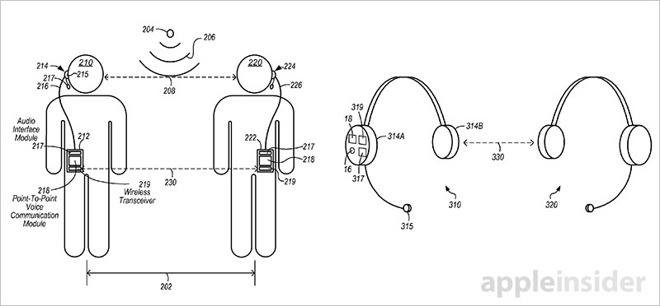A new Apple patent describes a communications and headset platform that uses point-to-point (p2p) network tech instead of cellular technology. The documents filed by the iPhone and Mac maker describe a new invention that could connect a Lightning headphone with similar devices over wireless networks. This smart walkie-talkie system would include audio hardware such as the speaker and microphone, and a telecommunications module to work with other close headsets.
Apple's patent application was published by the United States Patent and Trademark Office on May 26, Thursday. It is for a "Point-to-point ad hoc voice communication" and includes different versions of the smart device.
One version connects gadgets to a mobile device via a Lightning or standard 3.5-millimeter headphone jack. This allows special interfacing software to be used.
The new system could work with stereo headphones with built-in mics and remote control modules. That includes Apple's free EarPods, according to Apple Insider.
However, Wi-Fi or Bluetooth protocols are better options than standard cellular/satellite communications. This would result in low-latency communications and less delay between nearby devices.
In addition, in some cases a direct and low-latency connection would be better. That includes two people talking together in a noisy room. In such situations the two users are close enough to see body gestures so temporary direct communication is a good option.
The very detailed patent was created by a former engineer of German audio company Sennheiser, according to Mac Rumors. Apple's smart walkie-talkie is a touch-enabled system, icon-based graphical user interface (GUI).
Apple's patent might not become a real product on iOS devices. However, it could still be used by Apple Store employees or between development teams working at Apple headquarters in Cupertino, California.
The smart walkie-talkie patent application was originally filed in November 2014.
Walkie-talkies were first designed during World War II for military communications. They became popular again during the 1970s when CB radios were trending.
Walkie-talkie toy models gave children a wireless method to have "secret" talks. They had an average transmission range of a couple hundred yards. As a result the Federal Communications Commission (FCC) did not require licenses for low-powered walkie talkies.
Here's an iPhone 7 rumor about no headphone jack:



























